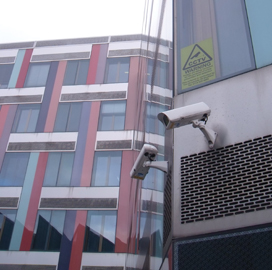A public space CCTV installation in Sheffield is among case studies in the April print edition of Professional Security Magazine. We speak to the installer to learn more.
Sheffield City Council’s use of Safer Streets Fund money from the Home Office on Ecclesall Road has wider applications. To give some background, under the Safer Streets banner, public realm CCTV by local government has seen a boost to capital spending last seen in the early 2000s when analogue CCTV systems, typically running over copper fibre and recording to tape, sprang up around town and city centres. Harder or rather more expensive to do was cover out of town or edge of town places, or add to a system if a town had a new retail or business centre, or if an area simply became more fashionable and saw more footfall. As Andy Stokes, director of the Leeds-based security company Gough & Kelly, told Professional Security, Sheffield council had wanted to do something (in community safety terms) about Ecclesall Road, the sort of place numerous towns and cities have – a hive of activity in recent years, new student living blocks (pictured), and bars and restaurants. The council however didn’t have the resources or the technology to fit cameras. Now the tech is in place of fibre, encrypted wireless transmission; and recent rounds of Safer Streets have been slanted towards protecting women (which, to state the obvious, is half of students).
The system that Gough & Kelly designed for the council, using Avada software, enables the feed of live images to South Yorkshire Police control rooms; and to mobile devices of officers on the ground. On Ecclesall Road as elsewhere, those in uniform at peak times – notably, yet not only, Friday and Saturday nights – may be police, but also council staff, a sign of what we might call a mixed economy of security, safety and even ambassadorial services. We can think of at least two ways that such a system works. First, it can link those otherwise siloed workforces. Second, it offers video for more prompt response to incidents, for outcomes beyond the analogue-era CCTV. Previously, an assault or on-street robbery or such crime would be reported to police who would request video footage, whether a tape or more recently a disc. That process would take weeks, and would require someone from the police to collect the footage, write out the necessary statement and return to the police station; taking time and therefore costing money. Compare that with footage uploaded to the cloud, that those authorised can access via an electronic link, when an arrested person is being processed at a custody suite, for instance. “It’s a vast improvement,” says Andy, “and technology has allowed it to happen.” What’s more, this offers the prospect of the holy grail for a security or indeed any service; putting a monetary value on it and so justifying it.
Background
In February Sheffield City Council went out to consultation about a proposed public space protection order (PSPO) for the city centre to combat various anti-social behaviour (ASB). A report accompanying the consultation admitted that ‘prohibitions in the City Centre area could displace ASB to other locations adjacent to the city centre. Kelham Island, ‘Little Sheffield’, Burngreave, and the Ecclesall Road area have been identified as the most likely areas to be affected by displacement. SYP and the council are already aware of some ASB issues in these areas’.









